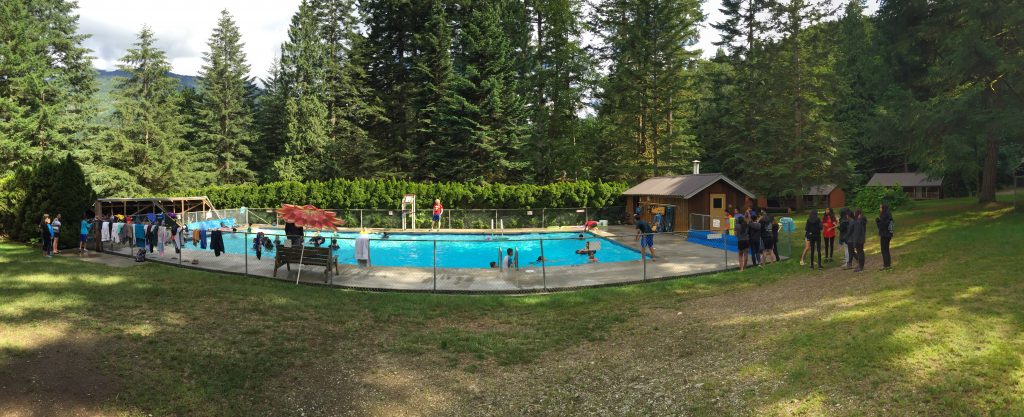In my previous post, I reflected upon the power of the outdoor classroom, a place that is truly experiential and allows the students to connect to material using a new set of “tools”. This applies to a very broad range of experiences students can have outside the traditional, desk-and-pencil-and-paper education. Opportunities to mentor younger students at a different school, day trips up the mountain to learn how to ski, or maybe even a field trip to the zoo to give the students a first hand experience in a unit about animal adaptations. However, this last week I was given an opportunity to take the students from my practicum to an outdoor camp. A truly outdoor education experience as they slept, ate, and did activities all outdoors, an experience most of which had never had.
The three day outdoor camp experience was certainly new for the majority of my students. Hardly any had been camping and a significant number hadn’t ever left Metro Vancouver. So this world of trees, and plants, and open skies was a new one and one that was, probably, quite uncomfortable at first. For myself as a teacher, this was also a new world. How do I, given so many distractions, obstacles and possible dangers, create a space structured yet open, a space to try and fail and try again, and a space that’s fun but also safe. So the same game-plan as a regular day of teaching but with so many more added elements. Right there, in considering how this outdoor camp will run, I’m going through the same mental list of how these activities are going to work as I would have in my classroom with a math activity on Experimental Probability.
However, this experience IS different and I would be a fool to say otherwise. These extra factors I need to consider are paramount. As the students are being taken out of their comfort zone in a lot the activities (ex. rock climbing, hiking, archery, etc.), I need to consider that this lack of comfort can result in an increase in the probability of something going wrong. Therefore this new, outdoor classroom is different. I found myself more “on edge” in a way. I was analyzing every activity and organizing the students to maximize protection of their safety and mental well-being. Upon reflection, this heightened sense of awareness was an important aspect of my being during the trip. I’m not saying that in a regular classroom lesson, I’m not considering these precautions, letting my students play full-contact tag in a third story classroom with the windows wide open. I’m saying that this outdoor classroom does require a certain awareness that a regular class doesn’t. And through it, your students are given the greatest possible opportunity to have success in this new environment, yet remaining mentally and physically safe.
But Graham, does this mean you’re standing underneath a student on the climbing wall, with arms outstretched, ready to catch them when the fall? No. Outdoor education is an unique experience as all these mantras and cliques we tell our students on a daily basis come to life:
“What do we do when we fall? We pick ourselves up and try again”
“There are many paths to your destination”
“You aren’t always going to hit a bullseye on the first attempt”
These quite, mantras, or cliques statements are made literal in these activities. Through outdoor education, I do think it makes the messages you’re trying to convey easier for the students to understand. If we fall off the wall when we are rock climbing, you learn from that experience and try again. Sometimes obstacles will block your path when you’re hiking, but there will be a way around them to your destination. A bullseye is an incredibly hard target to hit with a bow and arrow, nevertheless on your first attempt. With all these messages and the themes behind them presented in such an obvious way, the students are given a hands-on experience of what the message truly means. They feel the failure and feel the success of the achievement. They see how hard something can be, how the can learn from it, how to become stronger, and how to reach that goal. It is learning transformed into something tangible and something rooted in reality.
So what does outdoor education feel like? It feels real.
